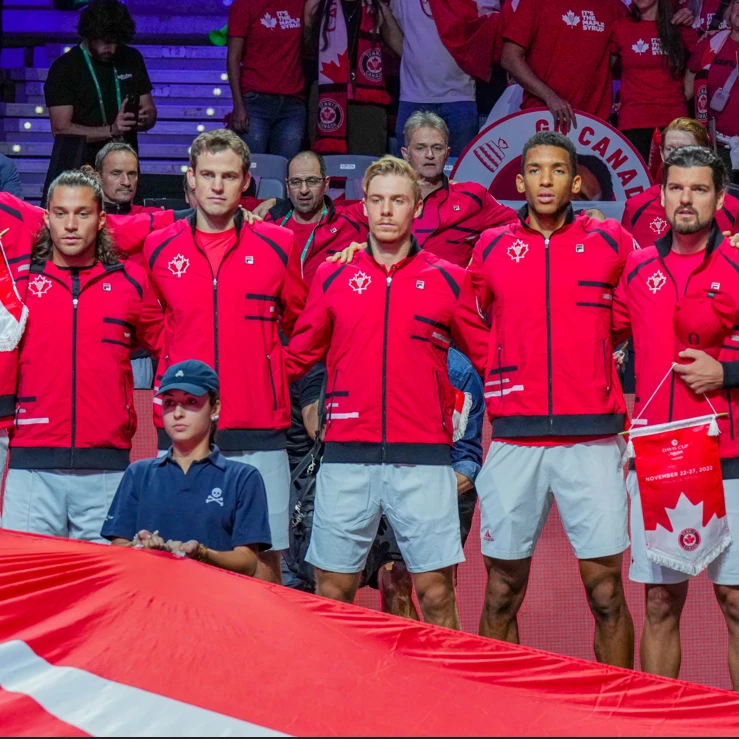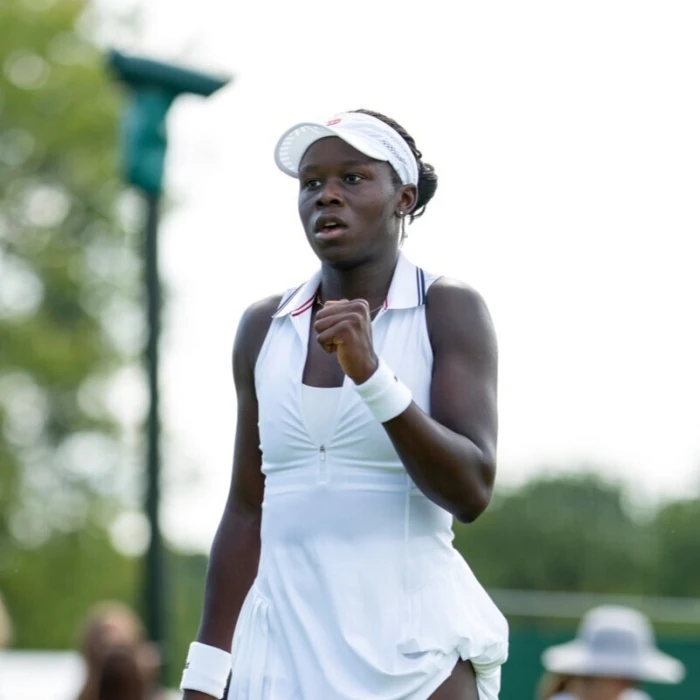Félix Auger-Aliassime was unquestionably the MVP of Canadian men’s tennis in 2022.
As impressive as the results were, that took him from No. 11 to No. 6 over the past 12 months, equally impressive was the sheer breadth of his season. It started on January 2 in Sydney, Australia, at the ATP Cup and concluded on November 27 in an unforgettable team triumph at the Davis Cup Finals in Malaga, Spain.
He played 87 matches (60-27) in the course of the year, which is more than except for two seasons in each of the careers of superstars Roger Federer (97 and 95), Rafael Nadal (93 and 89) and Novak Djokovic (97 and 87).
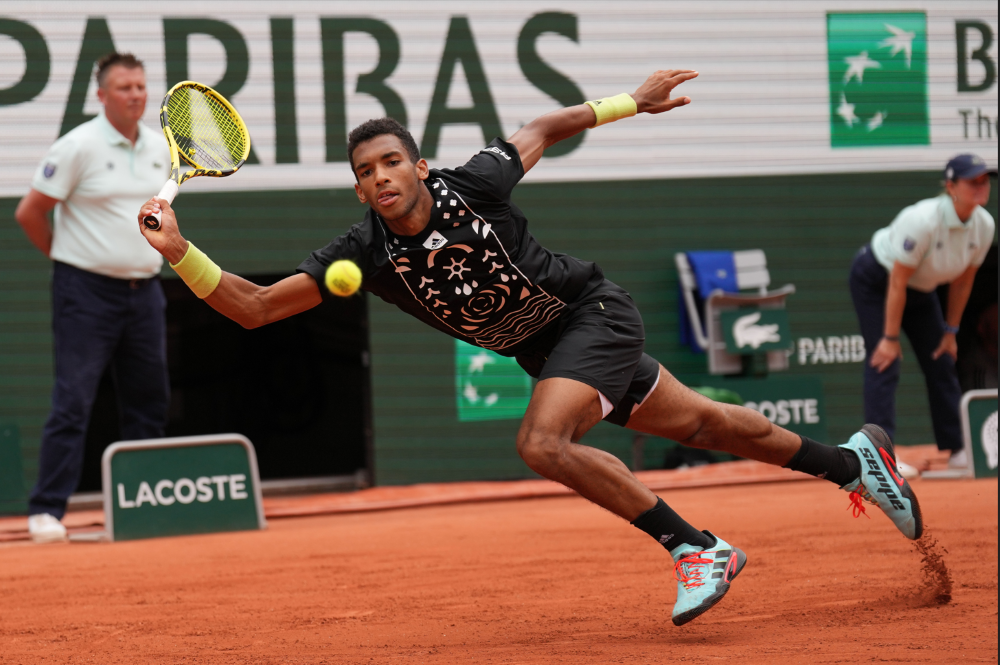
It began in Sydney when he led Canada to the ATP Cup, and he followed that by reaching the quarter-finals of the Aussie Open where he held a match point before losing 6-7(4), 3-6, 7-6(2), 7-5, 6-4 to eventual runner-up Daniil Medvedev.
After disappointments in eight consecutive career ATP Tour finals, he finally got his breakthrough title in February, defeating Stefanos Tsitsipas at the ATP 500 in Rotterdam before reaching the final in Marseille (Andrey Rublev) the next week.
The ‘Sunshine Double’ proved to be unproductive when he lost his opening round in both Indian Wells (Botic van de Zandschulp) and Miami (Miomir Kecmanovic). His ensuing clay-court season produced only modest results, but he did push now 14-time champion Rafael Nadal to 3-6, 6-3, 6-2, 3-6, 6-3 in the round-of-16 at Roland Garros.
Then he was only 4-4 on grass and lost to big-serving Maxime Cressy 6-7(5), 6-4, 7-6(9), 7-6(5) in the first round at Wimbledon. That may have been the biggest “what if?” of his season. Had he managed to get past the power-serving, 6-foot-7 Franco-American and gone on a run, it could have given a boost to his entire summer, and his year. Luckily, there were no ATP points on offer.
His summer turned out to be mediocre – lowlighted by a 6-1, 6-2 loss in the Omnium Banque Nationale présenté par Rogers quarter-finals to Casper Rudd at home in Montreal, as well as a listless 6-4, 6-4, 6-4 defeat to 20-year-old Jack Draper in the second round of the US Open.
Auger-Aliassime then got back on track in Laver Cup and Davis Cup in September but really caught fire in October – winning 16 matches in a row and capturing his 2nd, 3rd and 4th ATP titles in Florence (JJ Wolf), Antwerp (Sebastian Korda) and Basel, where he beat world No. 1 Carlos Alcaraz in the semi-finals and surging Holger Rune of Denmark in the final.
He seemed to run out of steam at the ATP 1000 in Paris – his fourth week in a row – losing to Rune in the semi-finals and went 1-2 at the ATP Finals in Torino, only managing a win over a struggling Nadal.
After playing inspired tennis in the Davis Cup group stage in Valencia in September highlighted by a sensational comeback, deciding-match victory with Vasek Pospisil over the Spanish doubles duo of Marcel Granollers and Pedro Martinez, he saved the best for last with an unforgettable performance in the Davis Cup by Rakuten Finals. He won singles matches over Germany’s Oscar Otte, Italy’s Lorenzo Musetti and Australia’s Alex de Minaur – plus a doubles semi-final victory with Pospisil over Italians Matteo Berrettini and Fabio Fognini. And all those matches were in straight sets and won without him ever losing his serve.
His tour de force brought Canada its first-ever Davis Cup. And to demonstrate his off-court aplomb, amid the team’s raucous celebrations, he appeared admirably coherent on the Radio-Canada popular talk show – Tout Le Monde En Parle in Montreal – live at 2 a.m. Malaga time.

Auger-Aliassime sidekick Denis Shapovalov dropped from No. 14 to No. 18 in the year-end 2022 rankings. But he had to be encouraged by a fall, which saw him reach ATP Tour finals in Seoul, South Korea, and Vienna and as well as the semi-finals in Tokyo to rebound from a seasonal rankings low of No. 24 in August. He famously won a lights-out doubles match with Pospisil against Germans Tim Puetz and Kevin Krawietz at the Davis Cup Finals. He and Pospisil elevated to amazing heights to overcome the accomplished German pair 2-6, 6-3, 6-3 with a quarter-final tie on the line in the deciding match.
He then defeated Aussie Thanasi Kokkinakis on the final day to set up Auger-Aliassime’s finishing-touch victory over de Minaur.
Starting out 2022 enduring a bout of COVID-19 and quarantine in Australia, Shapovalov was 3-1 at the ATP Cup in Sydney and then defeated No. 3-ranked Alexander Zverev on his way to the Aussie Open quarter-finals before losing a 6-3, 6-4, 4-6, 3-6, 6-3 marathon to eventual champion Nadal.
But in the first half of the year, he then went 15 tournaments – from Rotterdam in February to Washington in August (10-15) – without winning more than one match except for a semi-final in Dubai (red-hot Jiri Vesely) in February and a quarter-final in Rome (Casper Rudd) in May.
He split with coach Jamie Delgado, long-time coach of Andy Murray, in May after six months together, and has since mainly had friend and former player Peter Polansky in a mentoring role. It seems to have gradually helped him and, during Davis Cup last month, he revealed that the 34-year-old Polansky, who hasn’t played a tournament since early February, will be back on board in 2023.
There were signs of better things to come in Cincinnati last summer when Shapovalov defeated No. 18 Grigor Dimitrov and No. 31 Tommy Paul before losing 7-5, 7-5 to No. 1-ranked Daniil Medvedev.
Then there was an excruciating loss to another Russian, No. 11 Andrey Rublev – 6-4, 2-6, 6-7(3), 6-4, 7-6(7) – in the third round at the US Open.
He had an excessive number of ‘close but no cigar’ matches in 2022, the kind of results he will hope to reverse in 2023. From Cincinnati until the end of this season, Shapovalov went 17-9 and appears to be on an uptick.
But he will have to improve aspects of his serve, specifically to correct a double fault issue. With an average of 5.5 per match, he was only behind Cressy (8.1) and Alexander Bublik (6.5) among 2022 main-tour players in that stat.
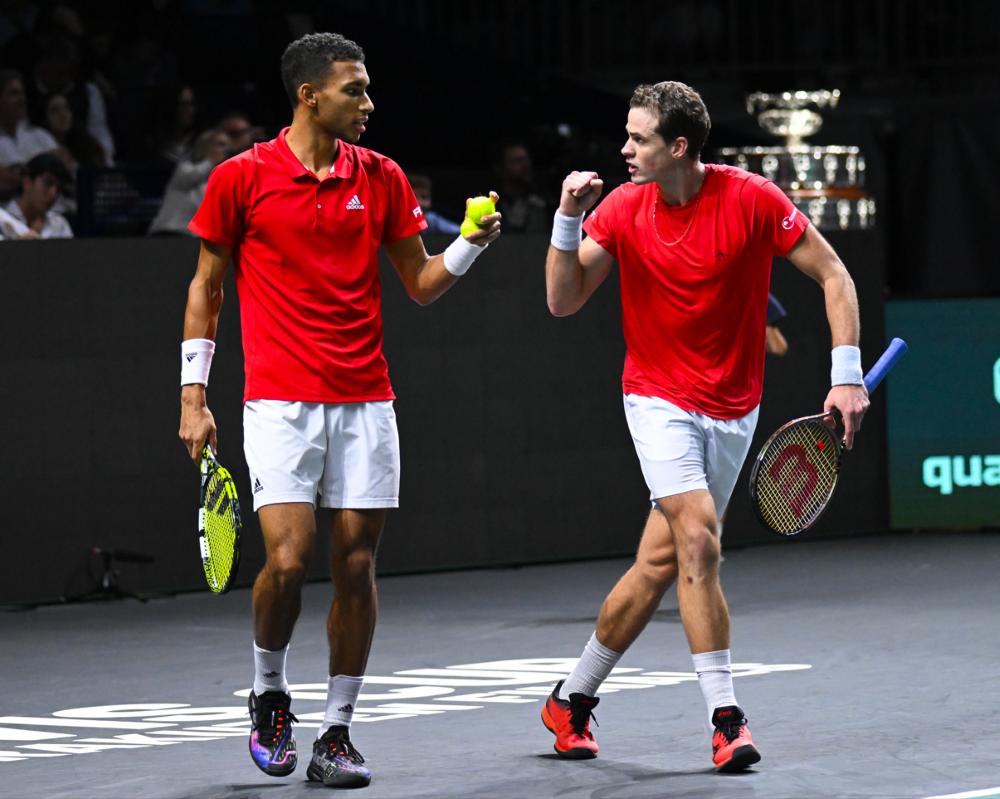
It may not seem like much, but Vasek Pospisil had to put in the time and the travel to improve 2021’s year-end ranking of No. 133 to No. 98 this season.
The bonus, of course, is that he almost certainly is assured of a direct entry to next month’s Australian Open – he only needs a single withdrawal of one of the 104 players entered before the start of qualifying on January 11th in order to get in. (Note: No. 77 Kamil Majchrzak of Poland is currently under a drug suspension and highly-unlikely to play.)
When he’s in Melbourne in a few weeks, Pospisil can think back to this past year when he spent January in Europe playing Challenger events – going 9-2 and winning the $48,000 USD event in Quimper, France. He then reached the quarter-final of the ATP 250 in Dallas in February and went back to Europe for Challengers – making the final in Pau, France, and the semi-finals in Torino.
He lost in the second round of qualifying in Indian Wells while having a left quad issue and in the first round of qualifying in Miami before taking time off with an elbow injury.
He didn’t play again until the grass-court season in June and struggled – losing in the first round of Wimbledon qualifying.
The summer wasn’t productive until he reached the semi-final of the Odlum Brown Challenger in Vancouver in August, lost in the second round of US Open qualifying (with cramps) to Italian veteran Andreas Seppi and then made the quarter-finals of the ATP 250 in Tel Aviv, losing 7-6(5), 6-3 to friend Novak Djokovic.
During a Challengers sprint to the year-end finish, he reached the final in Mouilleron le Captif, France, the semi-final in Ismaning, Germany, the third round of the National Bank Challenger in Calgary and – critically – won the National Bank Challenger in Drummondville. That moved his ranking from No. 115 to No. 100 and that coveted spot in the main draw at Melbourne Park.
The season had a glorious coda as he played superb doubles in Davis Cup, starting with key two wins with Auger-Aliassime in Valencia in September. In Malaga last month, he successfully partnered with Shapovalov against Germany, and then Auger-Aliassime against Italy, in Canada’s historic Davis Cup triumph. He was wearing the red-and-white in his 28th tie in 12 years of representing Canada dating back to 2008.

Two other Canadian men made progress in 2022 – and latterly gained acclaim as peerless cheerleaders for the Canadian Davis Cup team in Malaga – Alexis Galarneau and Gabriel Diallo.
Galarneau, who played college tennis at North Carolina State, started 2022 at No. 378 and made a significant improvement to No. 207 by season’s end. A gritty competitor, Galarneau played in 20 Challenger events and compiled a 28-20 record – with highlights being a final in Winnipeg in July and semi-finals in Francavilla al Mare, Italy, in May and Tiburon, California, in October. He also played Davis Cup for Canada in February in The Hague, losing 7-5, 7-6(9) to No. 48-ranked Dutchman van de Zandschulp.
At the Omnium Banque Nationale, he received a wild card and was beaten 6-4, 7-5 by No. 19-ranked Dimitrov.
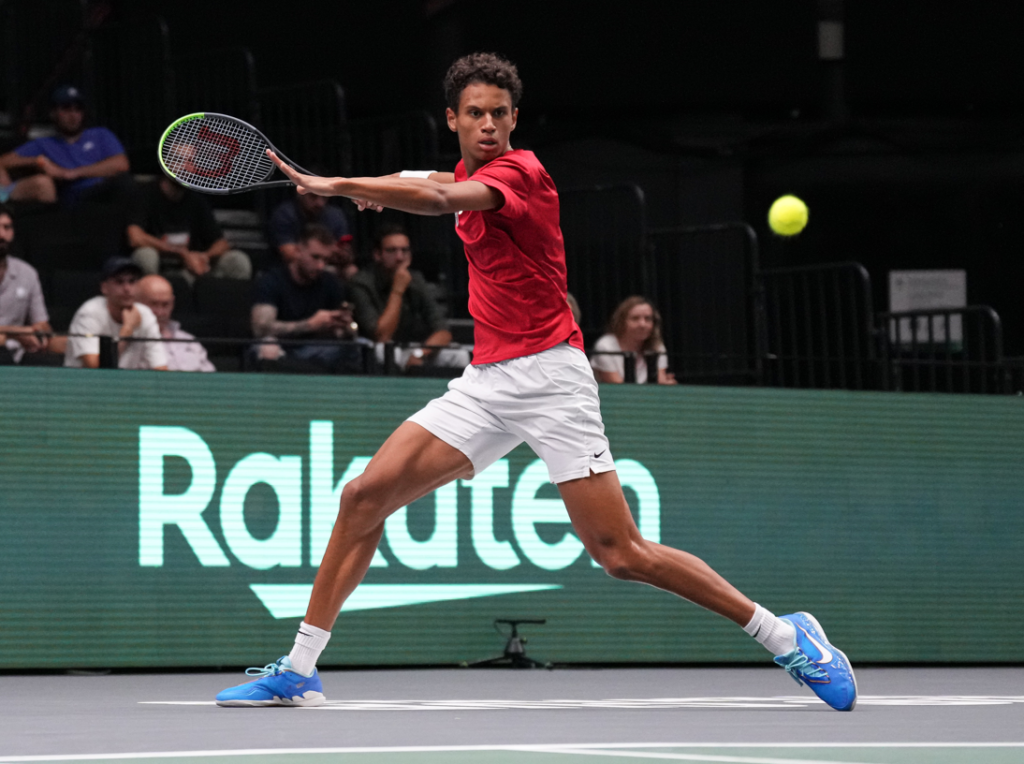
Diallo, 21, made an impressive rankings advance from No. 988 to No. 227 over the past 12 months, all the while playing college tennis at the University of Kentucky where he helped his team win the Southeastern Conference title. He led the Wildcats in wins, going 38-8 on the year.
Away from college, the 6-foot-7 big server didn’t play any tournaments until the ITF $25,000 event in East Lansing, Michigan, in June – and he won it.
He defeated No. 62 James Duckworth in the first round of qualifying at the Omnium Banque Nationale in Montreal before achieving his career highlight so far by winning the National Bank Championships in Granby in late August. That earned him a valuable 80 ATP ranking points.
Diallo played his first Davis Cup match in September in Valencia, coming out on the short end of a 6-2, 6-2 score against No. 66-ranked Laslo Djere of Serbia.
In the fall he reached the final of a Challenger in Fairfield, California, including a win over American rising-star Ben Shelton, the 2022 NCAA champion – and also made the semi-finals of the National Bank Challenger in Calgary.
A breath of fresh air on the Canadian scene, the outgoing Diallo has decided to forgo his senior year at Kentucky and turn pro. With no ATP points to defend, the Montrealer bears watching in the first half of 2023.
Both Diallo and Galarneau are planning to play the qualifying at the 2023 Australian Open.

The most promising player among Canadian junior boys in 2022 was 18-year-old Jaden Weekes from Montreal. He finished No. 48 in the ITF rankings in a year highlighted by a title at the Grade 2 event in Prato, Italy, in June.
He also won doubles titles in San Diego (American Jonah Braswell) in March, Salsomaggiore, Italy, in April (American Aiden Kim) and Nottingham, England, (Thai Tanapatt Nirundorn) in June.
Weekes will be playing college tennis at the University of Kentucky beginning with the new term.
Feature Photo: Martin Sidorjak



